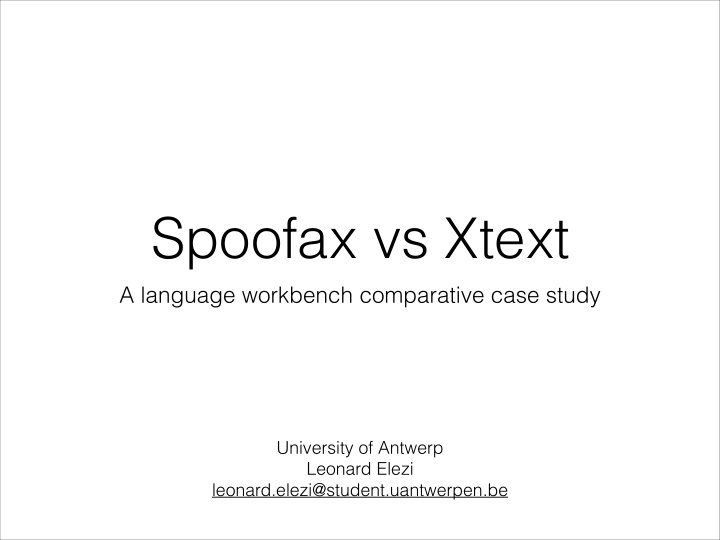



Spoofax vs Xtext A language workbench comparative case study University of Antwerp Leonard Elezi leonard.elezi@student.uantwerpen.be
*Ingredients of a DSL: 1. Parser 2. Semantic analysis 3. Transformations 4. Code generator 5. Integration to an IDE * The Spoofax Language Workbench Rules for Declarative Specification of Languages and IDEs, Lennart C. L. Kats, Eelco Visser, 2010
What is a language workbench? A tool that supports DSL creation not just in terms of parsing and code generation but also in providing a better editing experience for DSL users.* * M. Fowler. Language workbenches: The killer-app for domain specific languages http://martinfowler.com/articles/ languageWorkbench.html, 2005
Spoofax • On top of Eclipse • Text based approach to building DSLs • SDF to define grammars • Stratego transformation language • Editor language
Xtext • Also built on Eclipse • Tight integration with EMF • Xtend for code generation • Java for constraint checking
Reading Material • The Spoofax Language Workbench Rules for Declarative Specification of Languages and IDEs, Lennart C. L. Kats, Eelco Visser • Stratego: A Language for Program Transformation based on Rewriting Strategies System Description of Stratego 0.5, Eelco Visser • A Comparison of Tool Support for Textual Domain-Specic Languages, Michael Pfeier, Josef Pichler • Comparing Language Workbenches, Roman Stoffel • http://strategoxt.org/Spoofax • http://www.eclipse.org/Xtext/index.html • http://www.languageworkbenches.net
Remaining work • Determine comparison criteria • Create and define a small DSL language to have a fair amount of results for the comparison • Develop the DSL in the respective tools and write a paper on the process and results
Recommend
More recommend